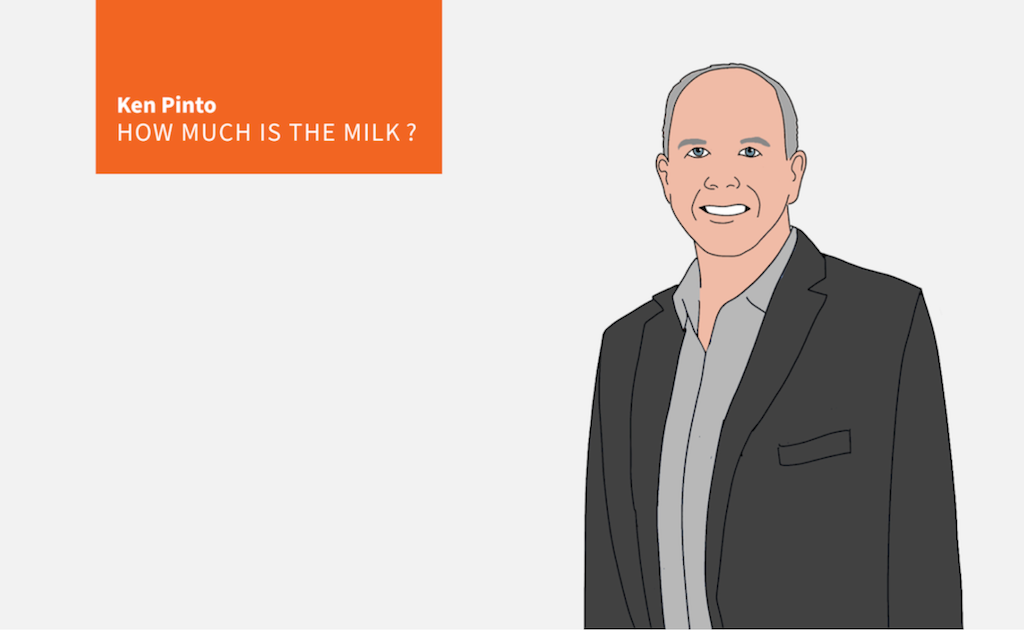Products
Ken Pinto: Negotiate Processes, Not Just Prices As Volatility Reigns
In a topsy-turvy materials market, cost control is about more than chasing discounts. Ken Pinto explains why smarter process negotiations—not temporary price breaks—create lasting advantages for builders navigating uncertainty.

Frequent changes, whether positive or negative, can cause uncertainty in global markets. The United States is one of the most influential actors in the global market, as highlighted by the effects of U.S. tariffs on global economies. Uncertainty, rather than supply or demand, is the primary driver for volatility in commodity materials used in home construction today. Tracking commodities helps us predict changes in building materials pricing before they occur.
(Wouldn’t that be nice?)
Some of our most critical commodity-tracking data, such as the Producer Price Index, is unavailable for September due to the government shutdown. As a result, September’s data will be delayed until the Q4 report.
In general, most commodities are trending slightly downward, suggesting this trend continued through September. We won’t know for sure until the government reopens and the reports are generated and posted online.
Consistent with commodity price trends, many of the homebuilders we work with say their costs are declining as they rebid projects. The lower demand for new-home construction is rippling throughout the supply chain, except for large capital projects.
Commodity volatility has been fairly predictable, affecting steel, copper, aluminum, cars, pharmaceuticals, and textiles, among other industries. The latest tariff announcement, however, caught me off guard. Kitchen cabinets will face a 25% tariff beginning Nov. 1, rising to 50% on Jan. 1. I don’t know the volume of imported cabinets, but this will likely erase any pricing benefit. I guess that’s the idea.
I want to remind homebuilders that any price concessions received via rebidding are temporary. Reductions in house costs achieved by removing costs, not margins, from the supply chain are more likely to be permanent. Slow sales can be painful for an organization, but they can also be an excellent opportunity to change how materials and labor are procured and applied. Now is the time to bargain with your labor and material suppliers to do things differently.
Quarterly Highlights
In the table below, it may seem less relevant to continue comparing with 2019, but we think it is important to stay grounded in pre-pandemic metrics so we do not become content with today’s prices as the new normal. Making houses more affordable depends on our ability to reduce costs. Building material prices were not exactly low in 2019, but it’s a good benchmark — for now.
Aluminum Wire
With more homebuilders using copper-clad aluminum wiring, the aluminum wire commodity pricing index is among the top five on our watch list. Currently, aluminum wire prices are up 94% since January and have surged 1391% (not a typo) since 2019. Most of the aluminum wire we use in the U.S. is made here, so we do not think this is a tariff-related increase. We suspect wire manufacturers are making moves to offset margin losses due to rising aluminum wire sales and declining copper sales.
Copper Wire
Copper wire prices dropped 35% in early October, and are still 94% above January prices. Pricing for this product is mainly driven by supply and demand. About 87% of copper wire is made in the U.S. and not impacted by tariffs. We expect continued volatility due to waning residential construction demand and accelerating demand from A.I. data centers and supporting power distribution. Currently, copper wire is up 94% and has increased 162% since 2019.
Carpet Fibers
The YTD change in pricing is flat, due to a slight downward trend from April to September (and likely October, too), which offsets the increases in Q1.
Lumber
Lumber prices continue to bounce along the bottom. The patient buyer can find deals. Lumber mills have been threatening curtailments for months, yet few have shut down. Instead, they are cutting shifts and hoping this won’t last long. The risk of not getting labor back after a shutdown is enough to keep operating at break-even.
OSB is at a 10-year low. Time to stock up?
Diesel Fuel
Do you remember getting fuel surcharges from your trade contractors and material suppliers when the cost to fill up the tank rose? What happens when fuel prices go down 38%—do you get a discount off current invoices?
Cement and Ready-Mix
Cement and concrete demand is driven by commercial construction, especially large capital projects. Current prices are up 11% since January, and up 166% since 2019.
Acrylic Resins
Oil prices are on a downward trend, but are still 21% above January numbers. We suspect that acrylic resins will trend downward over the coming months, as we cannot find any reasons for high demand. Acrylic resins are used in a variety of products, including vinyl windows, carpets, plastic pipe (PVC, ABS, PEX), cultured marble, housewrap, paint, exterior insulation, acrylic stucco, vinyl fencing, and any application that requires adhesive (such as plywood, wood flooring, and laminated beams).
|
Description |
Since Jan 2025 |
Since Jun 2019 |
|
Aluminum Wire (Southwire) |
+94% |
+1391% |
|
Copper Wire (Southwire) |
+47% |
+162% |
|
Carpet Fibers (PPI) |
+0% |
+15% |
|
Cement (PPI) |
-1% |
+41% |
|
Cement (ENR) |
+11% |
+166% |
|
Ready-mix (PPI) |
-1% |
+42% |
|
Ready-mix (ENR) |
-1% |
+43% |
|
½” Copper Tubing, (ENR) |
+2% |
+119% |
|
Drywall, (PPI) |
+0% |
+48% |
|
Drywall, (ENR) |
+6% |
+77% |
|
Wall Insulation, (ENR) |
-2% |
+89% |
|
Lumber, (PPI) |
-2% |
+26% |
|
Plywood, (PPI) |
-2% |
+28% |
|
Acrylic Resin, (PPI) |
+8% |
+20% |
|
Roofing Felt, (PPI) |
+4% |
+44% |
|
Stainless Steel, (ENR) |
+13% |
+86% |
|
#4 Rebar, (ENR) |
+1% |
+24% |
|
Diesel Fuel, (EIA) |
-38% |
+37% |
|
Asphalt (PPI) |
+1% |
+22% |
|
Asphalt (CA DOT) |
+1% |
+19% |
|
Asphalt (FL DOT) |
+1% |
+21% |
|
Ductile Iron Pipe (ENR) |
+11% |
+63% |
|
PVC Pipe (4” Sewer) (ENR) |
+8% |
+175% |
|
Reinforced Concrete Pipe (all sizes)(ENR) |
+4% |
+101% |
- PPI – Producer Price Index (this data sometimes lags 1-3 months in reporting)
- ENR – Engineering News Record (most cost reports are only 1 month old)
- EIA – U.S. Energy Information Administration
- CA DOT – California Department of Transportation
- FL DOT – Florida Department of Transportation
- Southwire – the largest manufacturer of electrical wire in the U.S. and in the world
Looking Around the Next Corner
Over decades of experience, my most successful negotiations have occurred during periods of slow sales. Whether it’s because trade contractors, building material suppliers, and I have had more time on our hands, or because we’re just more willing to talk about uncomfortable things like change, I’m not sure.
Maybe a little bit of both.
We tend to think of negotiations as applying only to pricing, but sometimes we negotiate for a new process or way of doing things. I once asked my electrical supply company to ship door hardware to our job sites with the light fixtures. These two sets of products are delivered to the same house on the same day, as part of a typical construction schedule. We met weekly and discussed (my favorite word for “negotiate”) this new process for two months before they agreed, and we only spoke about pricing on the last day.
The Building Industry Association of San Diego taught us that it only takes four hours to build a house (see the YouTube video). We know there are ways to significantly speed up the construction process, but it’s tough to break from the tradition of doing things the way we've always done.
Putting door hardware and light fixtures on the same delivery truck was a no-brainer. Why hadn’t it been done years before? Because the electrician and the finish carpenter typically do not talk to each other. It took me, the homebuilder, to step back and look at the whole process to see it.
The constant material and labor price increases of the past several years are currently in a lull, but as soon as the market picks back up, those high prices will return. The best thing a homebuilder can do right now is improve how we build homes, ensuring the cost advantages are permanent.
MORE IN Products
How Precision Can Shave Time From Homebuilders' Build Cycle
Sales may be priority No. 1 right now. And that needs to be bolstered by virtually flawless operations. Boise Cascade’s SawTek gives builders speed, savings, and first-time-right quality when it matters most.
In Uncertain Times, Capability Investment Is A Survival Tool
Boise Cascade’s $140M mill improvements reflect a long-game commitment to builders under pressure from volatility, costs, and customer hesitation.
Margins Tighten, Value-Add Matters In Construction Supply
Even as overall construction supply revenues inch upward, Webb Analytics’ deep dive into the $600B pro channel reveals a shifting reality: declining unit volume, cautious outlooks, and strategic bright spots in value-added manufacturing and service partnerships.
